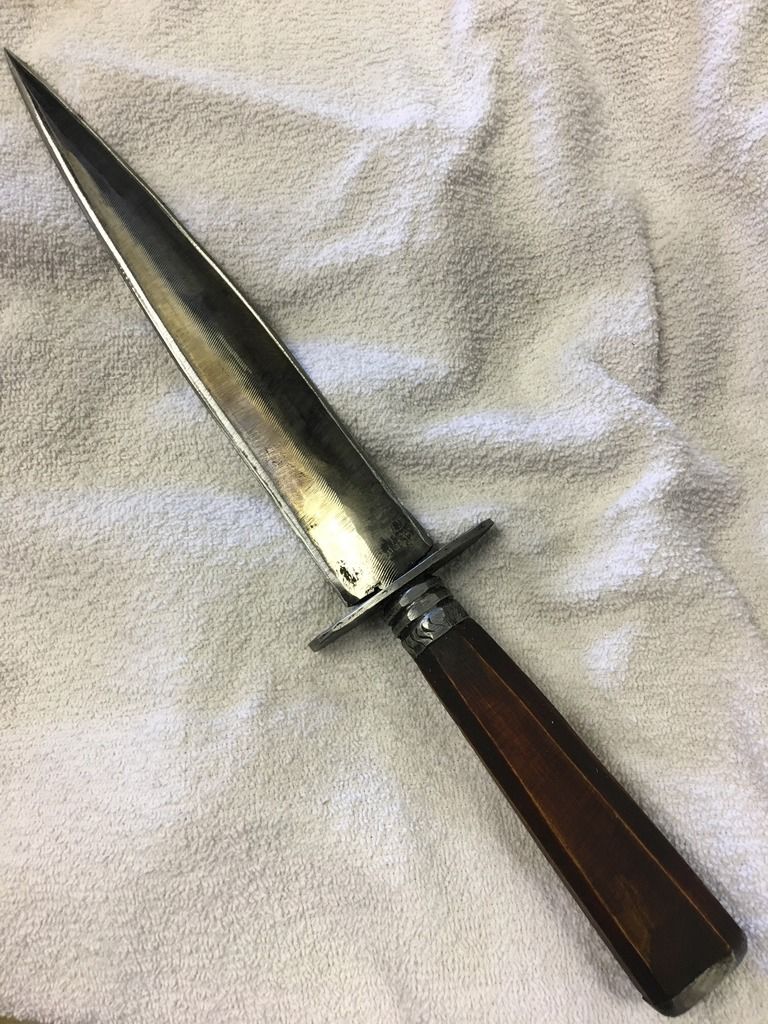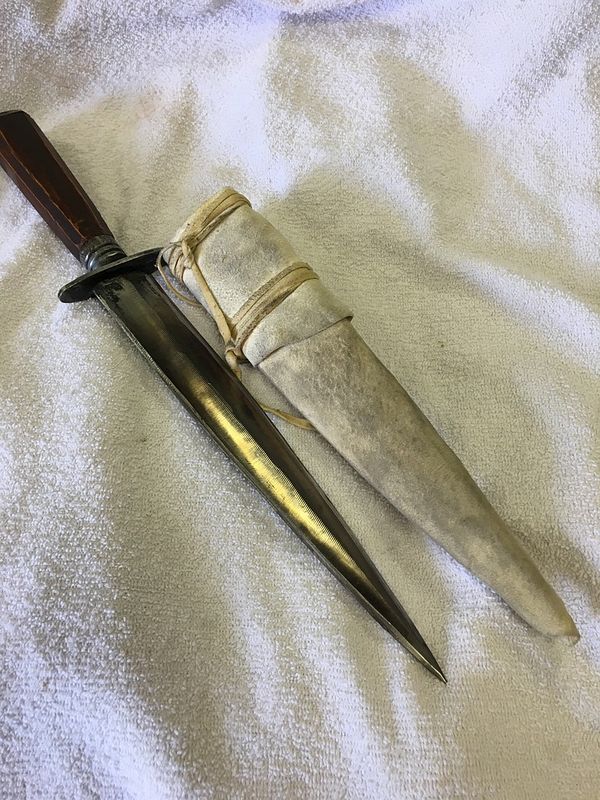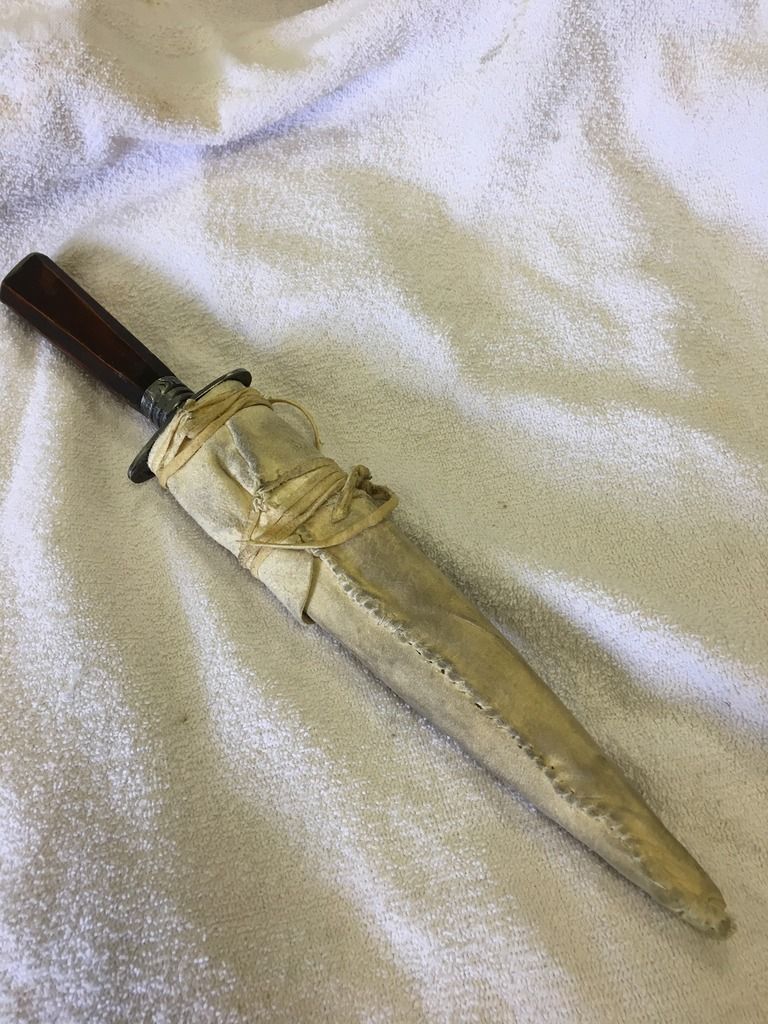buffcreekforge
40 Cal.
- Joined
- Oct 29, 2008
- Messages
- 118
- Reaction score
- 2
I want to share a project I recently finished. I made a double edge rifleman's knife from an old Nicholson file. The blade is 10 inches long and the knife is 15 inches overall. The handle is hickory with an iron ferrule and butt cap. The ferrule and butt cap are lightly engraved. The whole knife is lightly aged. The sheath is wood core with brain tan buckskin as a cover. The brain tan is center sewed on the back with linen thread. The sheath lightly aged as well. I appreciate the opportunity to share in the forum. I remain your humble servant,
Just Dave




Just Dave









